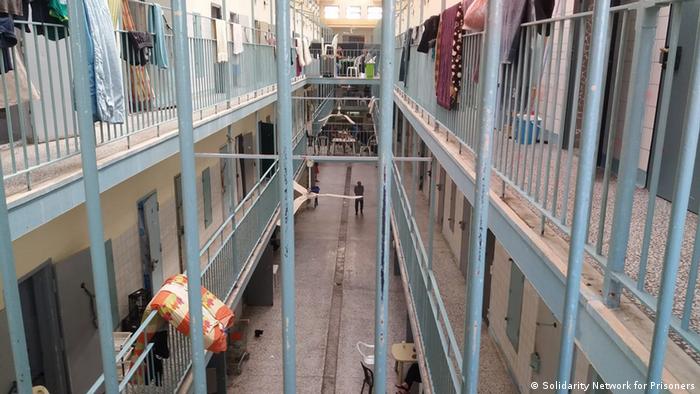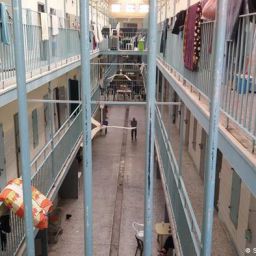Prisons create fertile ground for the spread of viruses, yet their administrations have not made public enough the Covid 19 cases, deaths and vaccinations in European prisons. DW research from 32 countries.
Vangelis Stathopoulos is one of more than half a million prisoners in the midst of the Covid-19 pandemic in Europe. “When Covid fell last December, almost half of the prisoners here fell ill at the same time,” said Stathopoulos, who is being held in the Larissa prison in Greece.
Prisons are an ideal breeding ground for viruses: overcrowded and often with poor hygiene. However little data has been made public regarding the spread of coronavirus in prison facilities.
Together with 12 editors of the European Data Journalism Network, DW has collected data from 29 countries, proving how many cases and how many deaths have been reported from prisons, the extent to which vaccinations have progressed and what measures have been taken to curb the spread. of the virus.
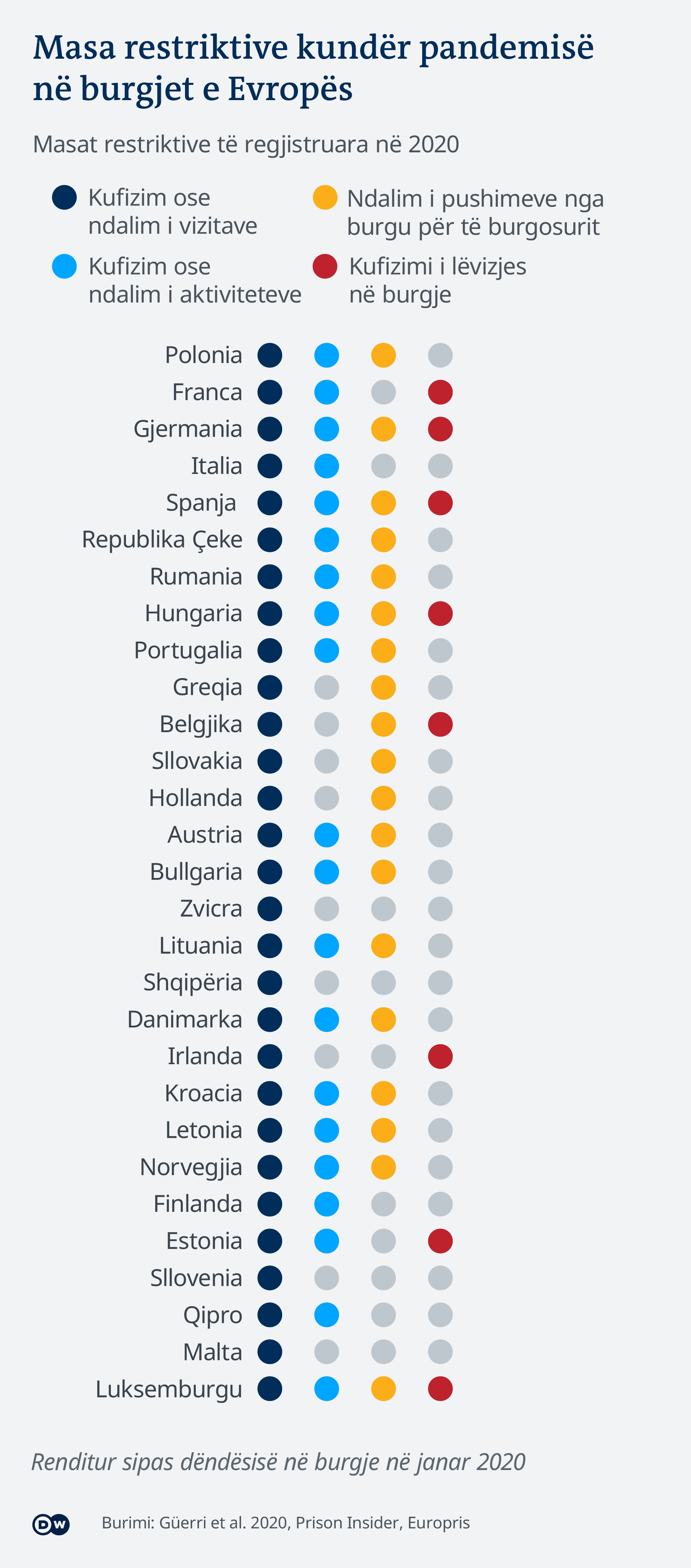
Filipa Alves da Costa, the World Health Organization’s public health consultant on prison programs, says the risk in prisons is similar to the risk people face, living in residences such as care homes and shelters. For many inmates there are numerous factors that increase the risk of dealing with a serious covid, such as diseases such as HIV, smoking histories or other drug use.
Covid blasts in prisons affect everyone
Epidemics in prisons affect not only people who are incarcerated or working there, but also the surrounding communities. In the United States, where the coronavirus spread rapidly in prisons in 2020, a nationwide study looked at the link between mass incarceration and the addition of more than one million Covid cases inside and outside prisons. “So if you do not protect prisons, you do not protect the community,” says da Costa.
A study done in Barcelona shows that most states made a strong and rapid closure of prisons from the beginning of the pandemic. Visits to prisons were immediately banned or strictly restricted in almost all countries. In many prisons, recreational activities, sports, and work were disrupted. Prison leave permits were also revoked. “Even our papers were quarantined,” recalls Csaba Vass, who is serving a prison sentence in Hungary.
Infection rates in prisons follow those of the general population
The data collected for this study show that the measures apparently helped to avoid the worst: Prisons in general have not become Covidi hotspots. Where infection rates were high in the entire population, they tended to be high even in prisons. But in many countries the cases reported by prisons are below the general population level, even in countries like Hungary with 96% and France with overpopulated prisons.
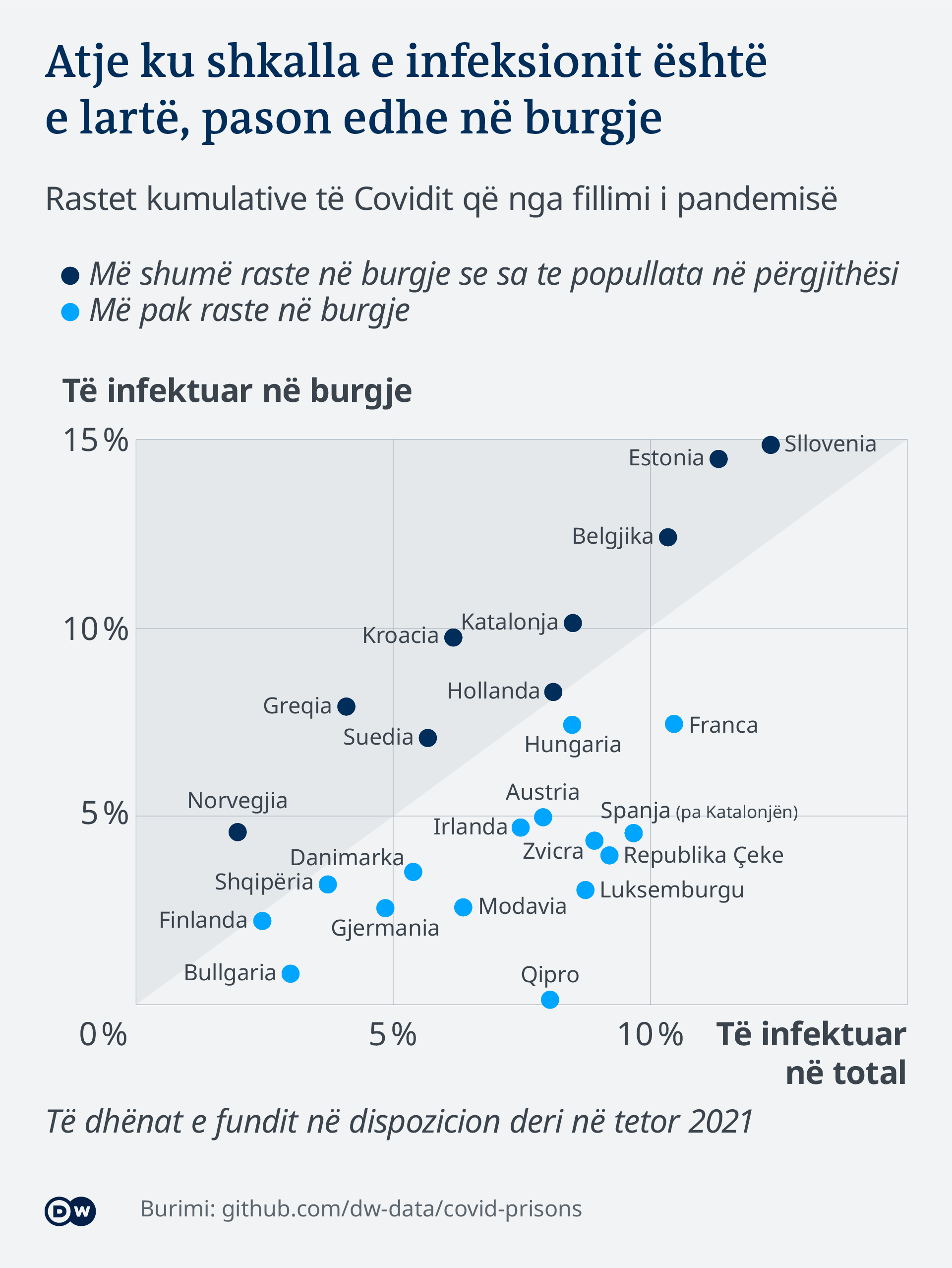
Covidi cases and deaths may not have been reported
Even in countries with a lower rate of infection, prisons can become places at risk for serious pandemic outbreaks. “Of course this is a problem, which comes from poor reporting,” said Adriano Martufi, who researches the conditions of European prisons at Leiden University. 2021. Stathopoulos says he has counted many more: “Since December 2020 alone I believe we have had more than 500 cases.”
Incomplete reporting may not necessarily be intentional, it can also come as a result of organizational difficulties. “Prison health services lack staff and equipment.”
Martufi says: “I am not even sure if they have the technical skills to collect and administer such data.” The small number of cases has a high price.If the infection figures are taken at face value, then the restrictive measures put in place to curb the spread of the coronavirus often have their own side effects.
UN rules on minimum standard treatment of prisoners stipulate that isolation should be used only as a last resort, for as short a time as possible and never for more than 15 days. But during the pandemic the isolation of prisoners has become a standard measure in many countries.
In some prisons in Germany, detainees are isolated for 14 days after each court hearing. A prison in Malta kept newcomers in a cell with only a mattress on the ground and an open toilet on the floor 23 hours a day for two weeks, under conditions that the European Committee for the Prevention of Torture has condemned since 2013.
And even persons, who were not quarantined, were often confined to their cells for much of the day. They had very little available to do anything over time. Especially the detention of visitors was very difficult for the prisoners.

“Visits are very important for prisoners,” said Catherine Heard, director of the World Prison Research Program. Prisoners have the right to family life according to the European Court of Human Rights.
In October 2020, inmates at Rec prison in Albania went on a hunger strike to protest the ban on visits following the announcement of the pandemic. From March, they could only contact family members by phone.
In Hungary, Vass says: “We had two and a half hours of physical contact twice a month before the pandemic. This absence caused very serious mental problems.”
Structural problems made the situation worse
As in many other areas of social life the situation is exacerbated by structural problems, which existed long before the pandemic. One in three European countries fills prisons beyond officially allowed capacity. Lack of space makes it impossible to implement distancing measures and alternative measures are not implemented due to lack of staff, says Heard: “If there is no staff to move people around the prison, then there is no choice but to keep them. locked up in their cells most of the day and night. ”
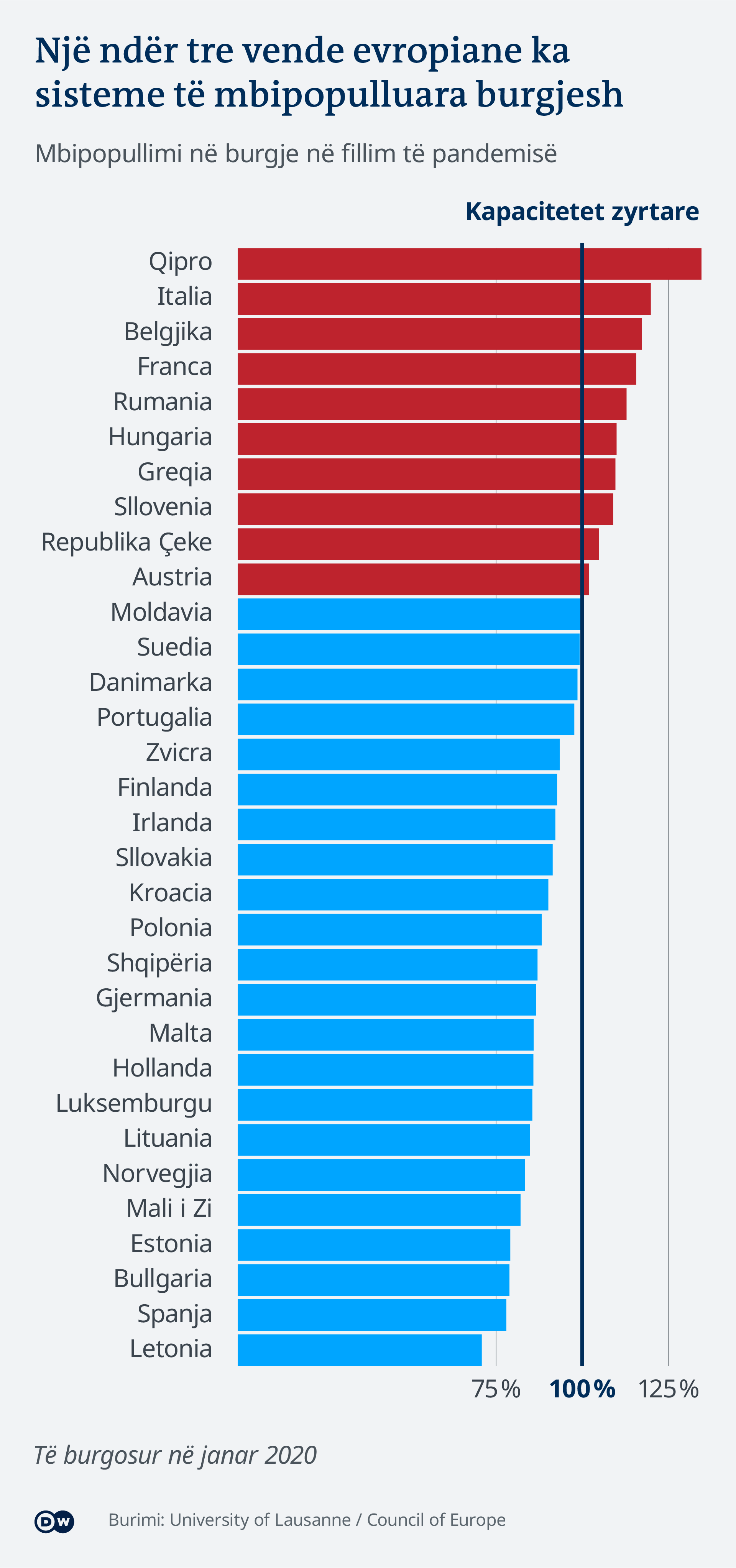
In many individual prisons the situation is much worse than the national average predicts. “I am in a cell, where five people are supposed to stay, now there are eight of us. It is impossible to keep our distance,” one person on hunger strike told a Croatian news agency at the start of the March 2020 pandemic. “We feel like we are on death row, waiting for the coronavirus to explode in prison.”
During the first wave many countries across Europe released prisoners at an unprecedented figure, in order to ease pressure on prisons. Heard says it is vital that countries now maintain this trend. In many prisons, the situation is much worse than the country average suggests.
The number of prisoners is growing again
But many countries seem to be reversing the progress made since the spring of 2020. After the initial decline in the number of prisoners, it is rising again to about half of the European countries analyzed in the study — in some cases it is exceeding usual.
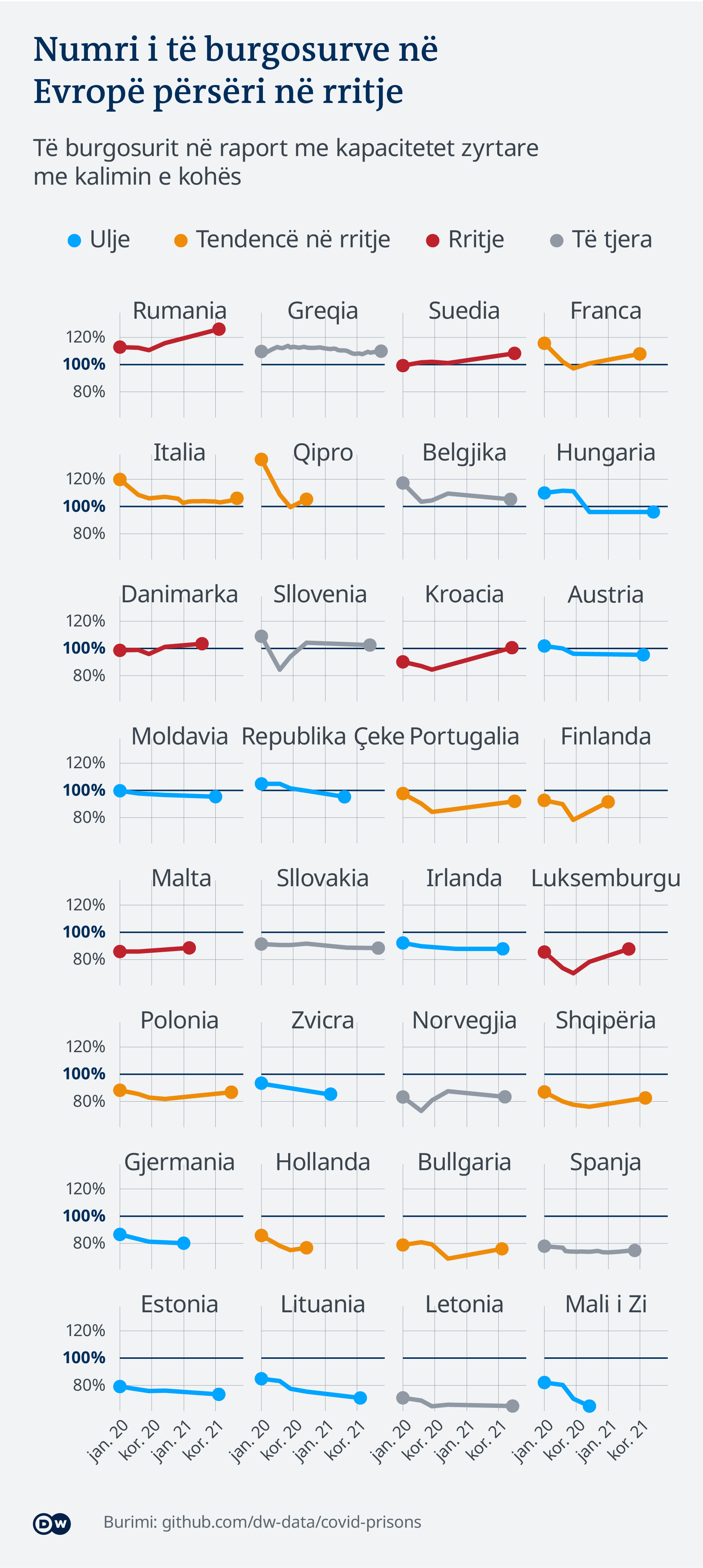
With these structural problems exacerbating the situation, which is already complicated, a “return to normal” in prisons depends on the same thing that applies to the rest of society: vaccination.
Delayed vaccinations in prisons
“When it was announced that there would be a vaccine, people calmed down a lot,” Vass says. “As far as I know, almost all the prisoners here have been vaccinated.” But not everyone has got it. Despite the high risk to prisoners, staff and the population, most European countries have not included prisoners in priority groups in their vaccination plans. Many of them have not even mentioned them at all.
“There have been constant remarks from independent supranational organizations that prisoners should be given priority,” says Martufi. “It is a good example of the absolute mismatch between political suggestions on the one hand and reality on the ground.”
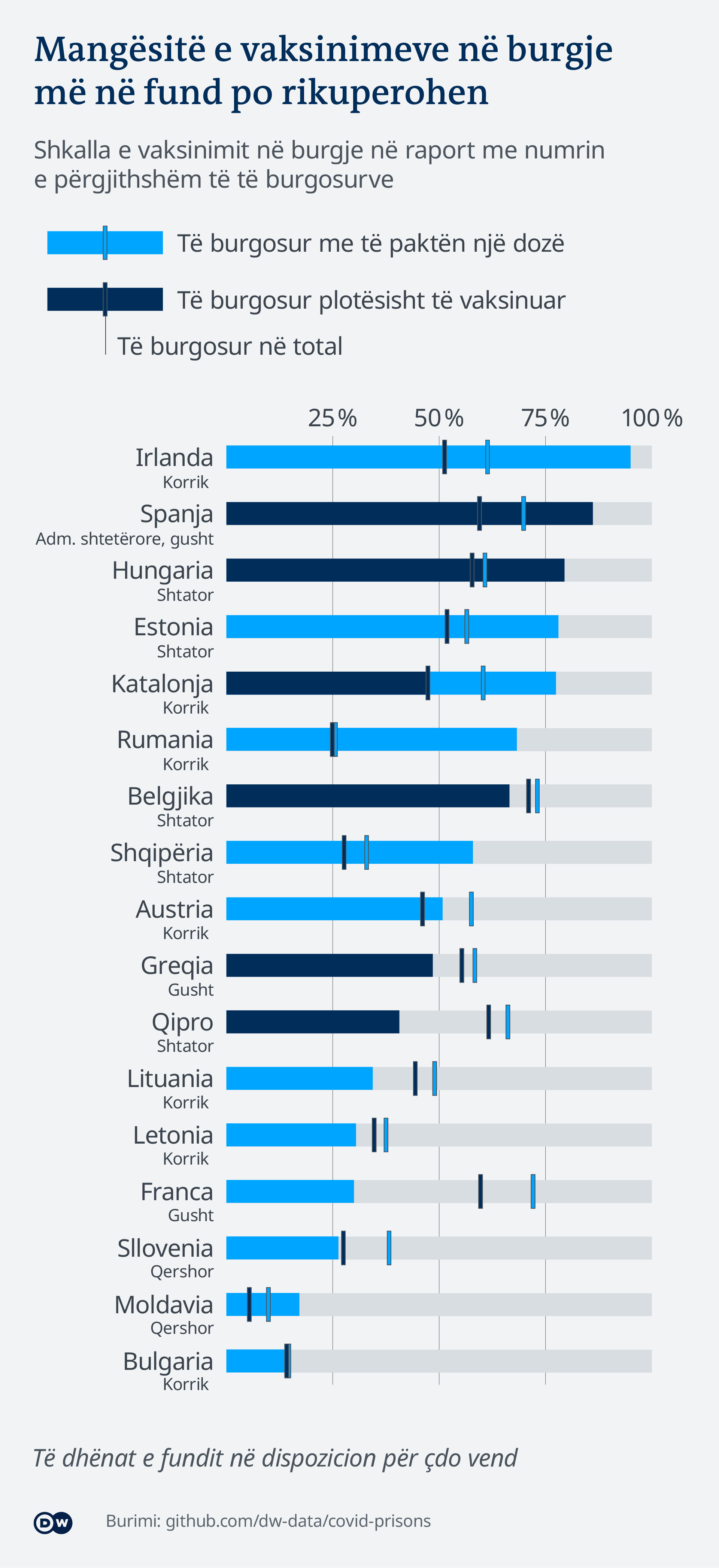
This has significantly delayed the start of vaccination in prisons. Some countries had not had any vaccinations in prisons until June 2021, while others report vaccinations starting in late March.
Lessons for the future
With the advent of the next wave in most European countries the pandemic has not been overcome for anyone, and certainly not even for people in prisons.
Experts say countries need to drastically reduce prison populations in order to better prepare for such situations in the future. “Covidi must have been a wake-up call to invest in better prison conditions and reduce incarceration,” says Heard.
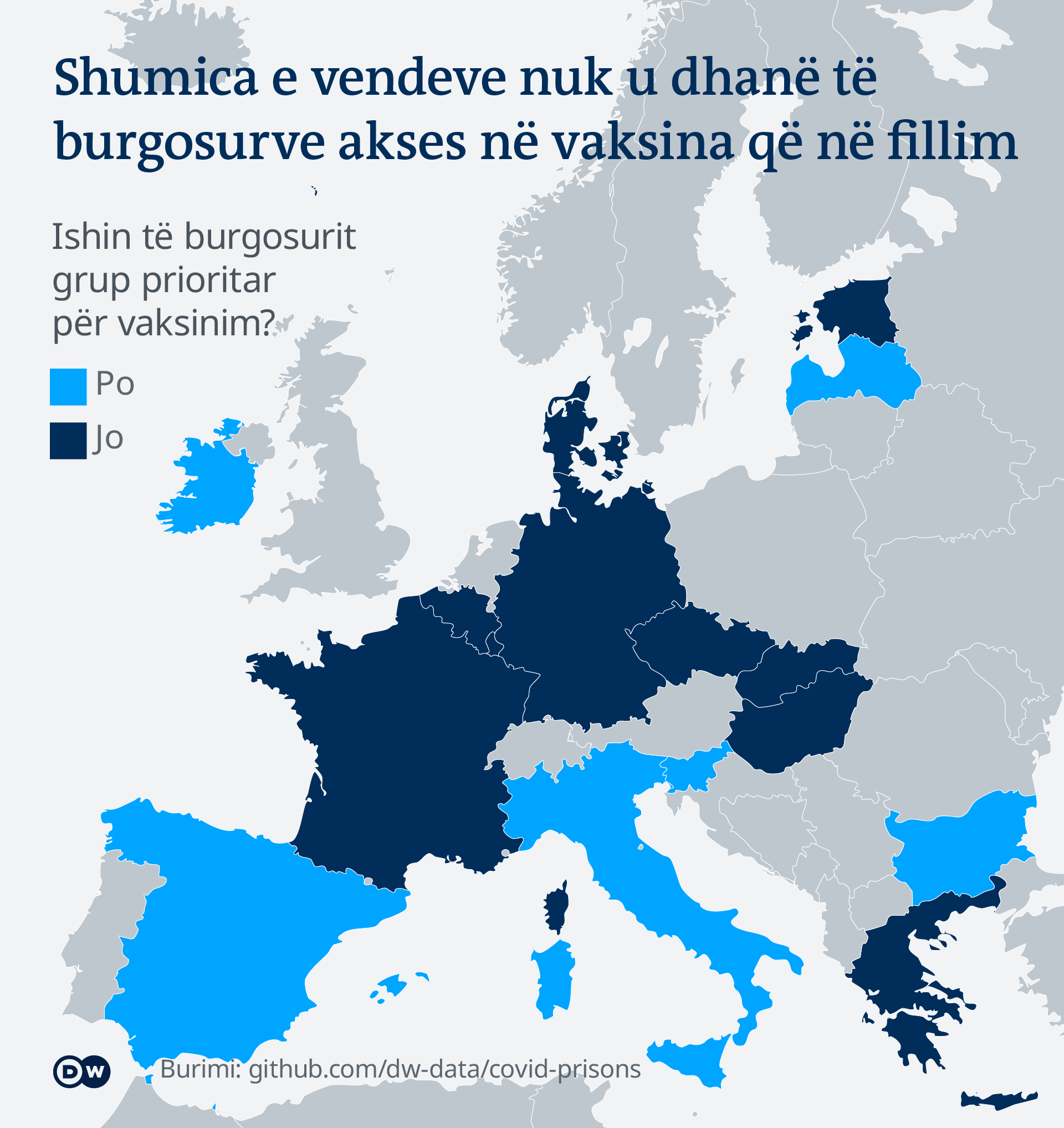
The public and political interests are crucial for this call for awakening to be heard. “It’s time to rethink our perception of prisoners as second-class citizens,” said Martufi. “We can not allow ourselves to be left behind. It will be worse for everyone.”
Author: Kira Schacht
Editors: Milan Gagnon, Gianna-Carina Grün and Peter Hille.
Translator: Ina Verbica
Produced within the European Data Journalism Network under the direction of Deutsche Welle in collaboration with Alternatives Economiques, Civio, El Confidencial, EUrologus, Il Sole24Ore, iMEdD, MIIR, OBC Transeuropa, Openpolis, Pod črto, VoxEurop


